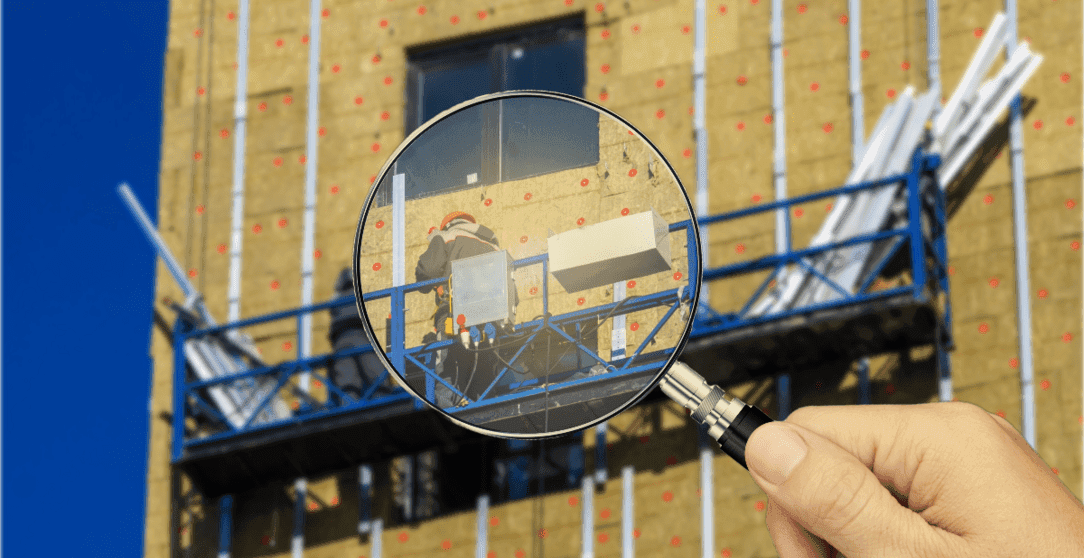Blog
Exploring the Thermal Performance of Aluminium Rainscreen Facades

When it comes to aluminium rainscreen facades, understanding the thermal performance of each type is vital to obtaining energy efficiency.
Understanding Thermal Performance
Many people and businesses often forget about the thermal performance of a building. The way a building reacts and holds in heat affects many things. It can minimise energy costs and keep things comfortable indoors.
Building Envelopes and Thermal Performance
A building envelope is all the elements of the outer shell of a building. They include things like walls, roofs, windows, doors, and floors.
When measuring the thermal performance of a building envelope, there are three things to think about:
Conduction
Convection
Radiation.
Many different things affect the thermal performance of building envelopes.
Insulation is the main one. The type and quality of insulation used affect the thermal performance due to it being able to reduce heat transfer.
The choice of materials can also affect thermal performance. Examples of this include the type of glass used for windows or the materials used in walls for insulation.
Thermal Conductivity of Aluminium
Thermal conductivity is simply the rate at which heat is transferred through conduction.
Aluminium is one of the best materials for thermal conductivity, with a thermal conductivity coefficient of approximately 237 W/m·K (watts per meter per Kelvin). This thermal conductivity makes it the ideal material for rainscreen facades.
But how does aluminium fare against other common materials?
Glass: Glass has a lower thermal conductivity rate of around 1.05 W/m·K, which can lead to much more heat loss compared to aluminium.
Stainless Steel: This one has around 15 W/m·K. So, although it has a better thermal conductivity rate than glass, it’s still nowhere close to the rate of aluminium.
Insulation Materials
Insulation materials play a pivotal role in regulating a building's temperature, enhancing energy efficiency, and providing occupants with a comfortable indoor environment.
Mineral Wool (Fibreglass and Stone Fibre): The biggest advantage of mineral wool is that it has an open fibre structure. This helps it hold in lots of air and heat, making it perfect for increasing thermal efficiency.
There are two main types of mineral wool: fibreglass and stone fibre. Fibreglass mineral wool is lighter and much more flexible than stone fibre. However, stone fibre has a higher melting point and is more dense, making it better for insulation.
PIR (Polyisocyanurate): This is a type of rigid foam insulation thattends to be thinner than mineral wool since it has a very high thermal performance as well as flame and smoke resistance.
VIP (Vacuum Insulation Panels): This is another great option for massively increasing thermal efficiency. It is extremely thin, which makes it perfect for facades with little space.
Insulation Placement Methods
There are two main insulation placement methods: internal and external.
Internal placement: The insulation is placed within the wall cavity, between the structural frame and the interior finish. However, this method can lead to thermal bridging and condensation.
External placement: The insulation is placed outside the structural frame but under the cladding. This helps maintain a stable indoor temperature, reduces the risk of condensation, and stops thermal bridging.
What Is Thermal Bridging?
Thermal bridging is an area that has a higher thermal conductivity than the materials that surround it. This creates a pathway where heat will flow through the building envelope, escaping insulation and creating areas where heat can be lost. Stopping thermal bridging is crucial, as otherwise, it will affect the overall energy efficiency of a building.
Putting thermal breaks between the cladding and the structural elements of a building can create a barrier against thermal bridging.
Energy Codes and Standards to Know About
Here are the relevant energy codes and standards to be aware of when it comes to rainscreen facades:
CWCT Standard: This is a standard for building envelopes and provides a checklist for each one, including the air permeability, thermal performance, access and safety, design life and more.
BS 8414: This tests the fire performance of external cladding on buildings.
BS 9414: This provides rules for assessing modifications to systems that have been tested per BS 8414.
PAS 9980: This provides a way to assess the likely fire performance of external walls
Environmental Impact of Aluminium Rainscreen Cladding
You can recycle aluminium, and it is extremely durable. This makes it one of the best materials when it comes to reducing your environmental impact. The fact that it also has a high thermal performance when used for rainscreen cladding is another massive advantage.
Maintenance and Long-Term Performance
Rainscreen facades are a sustainable choice due to their thermal efficiency, but to do that, they need to be looked after. Weather conditions, environmental pollutants and even general wear and tear can eventually break down the efficiency of any facade.
You can preserve thermal efficiency by regularly cleaning and keeping to an inspection and maintenance schedule.












